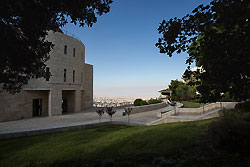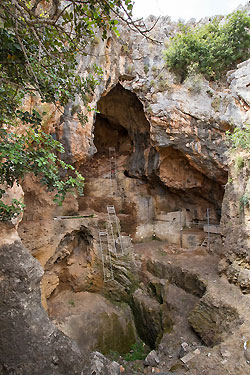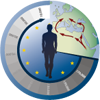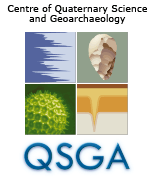At the end of this year’s Jordan campaign, Hannah Parow-Souchon, PhD student of project B1, continued to Israel for additional three weeks of study. The goal of this trip was to see as many Israelian Upper Palaeolithic (UP) collections as possible, get into contact with notable colleagues and learn from their experience in Levantine archaeology. A week was spent in Jerusalem, meeting the colleagues Anna Belfer-Cohen, Nigel Goring-Morris and Leore Grossman at the Hebrew University and studying the Aurignacian collection of Hayonim D, the Later UP collection of Shunera XV and the Nizzanean assemblage of Hamifgash IV, which resulted in many profitable discussions and many new insights into Levantine prehistory.
Then, an invitation to join a students’ excursion of the Hebrew University was accepted accompanying Ariel Malinsky-Buller to the sites of Nahal Hadera V, the Nahal Me’arot Caves and Hayonim, including a sneak preview on the new excavations of El Wad terrace conducted by Reuven Yeshurun (University of Haifa). A further three days were spent at the National Treasures Warehouse of the Israel Antiquities Authority following an invitation by Natalia Gubenko, the curator of the Prehistoric collections. There, the inventories of Boker BE Levels III and V, Ain Aqev D31 and Sde Divshon D27B were examined and evaluated for comparison to the Wadi Sabra material. After a great time in Jerusalem, Haifa was the next stop from where a visit to the sites of Kebara, Sefunim and Misliya was undertaken. The final highlight was an invitation by Omry Barzilai to participate at the excavations in Manot Cave for a few days and get invaluable insights into one of the most exciting Upper Palaeolithic sites currently under study. After engaging discussions and a lot of fun with the colleagues Ofer Marder, Mae Goder and Omry Barzilai the four days in Manot were over too soon and it was time to go home finally.
 Hebrew University of Jerusalem: View over the Jordan Valley towards Amman. Hebrew University of Jerusalem: View over the Jordan Valley towards Amman.Photo: Hannah Parow-Souchon |
 Tabun: View of the Middle Palaeolithic stratigraphy. Photo: Hannah Parow-Souchon |



































